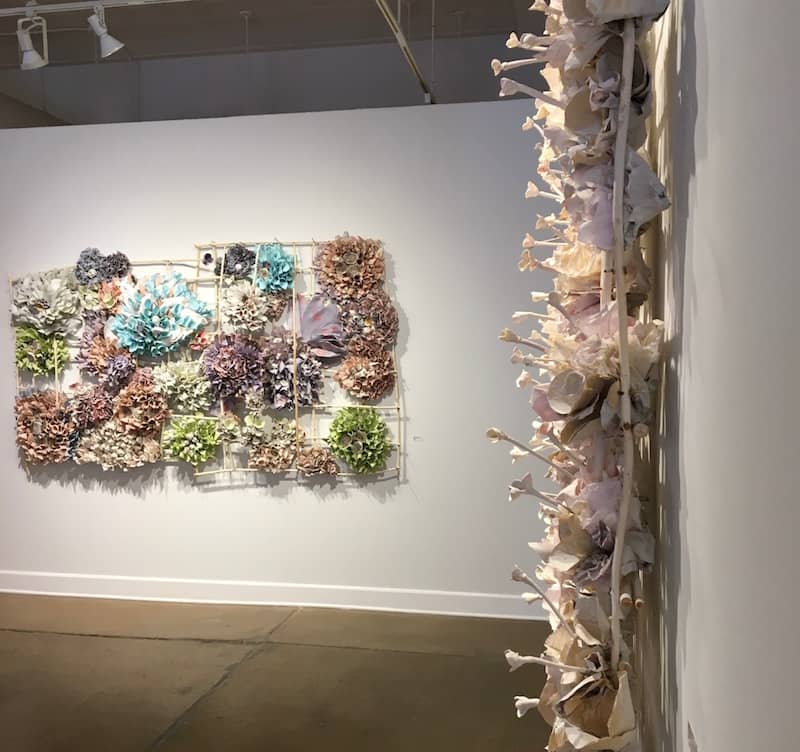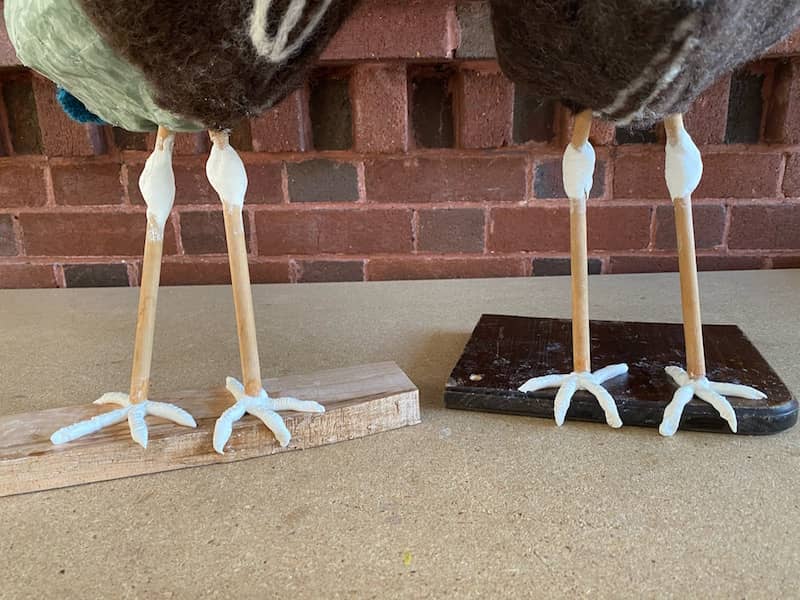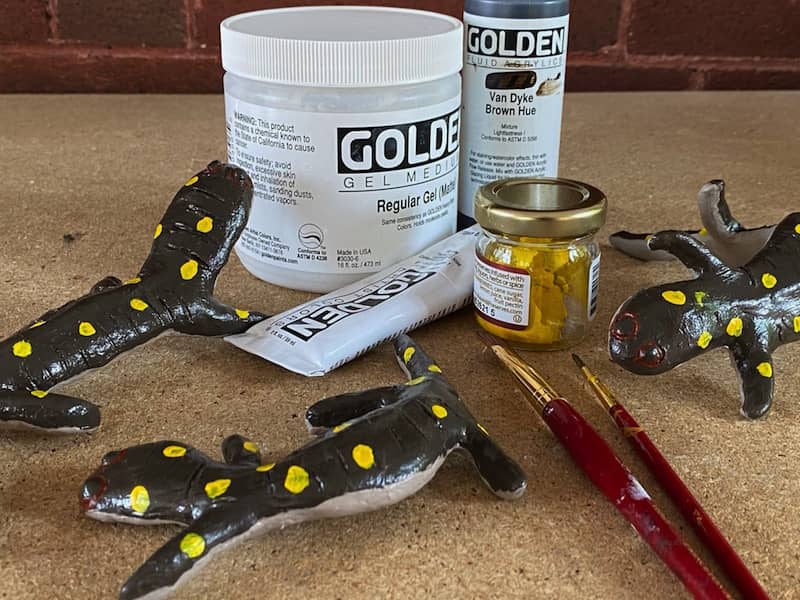In my visits to museums and art galleries I do more than admire the beauty of the art. After I soak up the colors and ponder the meaning of the works on display, I look closely at how the three-dimensional works are made. I can’t help it. I’m always on the lookout for new construction methods to use in my sculptures.
That’s how I discovered stone clay. It was somewhat roundabout though, like a circuitous path through a maze. It began with the work of Rebecca Hutchinson at the Duane Reed Gallery in St. Louis a couple years ago. Rebecca Hutchinson makes wall panels filled with gorgeous three-dimensional explosions of flower blossoms. The blossoms are made from paper and fiber pulp mixed with or coated with clay. She attaches them to grids of willow branches.
When I first saw these pieces, I was mystified. I couldn’t figure out how they were held together. The gallery assistant explained that the blossom pieces were coated with clay slip and air dried. The clay acts like glue and cements the flower petals to the willow grid. An article in the Summer 2020 issue of the Surface Design Journal further explains Hutchinson’s technique. (Check out the Surface Design Association here.)

Navigating Borders by Rebecca Hutchinson at the Duane Reed Gallery, St. Louis, MO. Photo by Eve Jacobs-Carnahan.
Using air dry clay to join other materials in sculpture
Hutchinson’s constructions launched me on a search to learn about air dry clay. I was intrigued by the notion of dipping fabric or paper into a slurry of clay to coat and strengthen it. The fact that it doesn’t need to be fired in a kiln or oven made it very appealing. I learned there are several types of air dry clay and decided to try Activa Premier light weight stone clay. It’s strong, very smooth, holds fine details, and is non-toxic. It can be painted, and best of all, it adheres to almost any surface.
I have yet to try coating knitted fabric with clay. Instead I concentrated on clay as a means of joining wood dowels to make joints in the legs on my bird sculptures. Unlike glue, the clay allows me to join the pieces at an angle. I work the clay into a casing where the two dowels came together, filling in the shape of the knee. (Do birds have knees?) Moistening the wood and the clay helps them stick together, as does smoothing the clay to a thin layer above and below the joint. After it dries, I add a thin, second layer of clay to smooth out any cracks or bumps.
I tested the strength of the clay by purposely dropping one of the newly joined legs on the floor of my studio. It didn’t break! Soon, I was shaping the clay into bird feet and claws.

Heron feet, work in progress, © 2021 Eve Jacobs-Carnahan.
You may recognize these sculptures-in-progress. I wrote about making their feathery bird bodies in this post.
Using air dry clay to create small figures
Several weeks later, while working on a design for the salamanders for my gerrymandering installation, I thought of stone clay again. I was having trouble envisioning slimy wet salamanders made from knitted yarn. Even the smoothest yarn has little in common with amphibian skins. But clay is another story. I could paint it with a glossy paint so it would look wet.
I found some tutorials on YouTube demonstrating how to make armatures for stone clay from wire and aluminum foil. With the wire, I can bend and pose the salamander into any position. The crushable foil fills out the bulk of the shape while allowing the clay to shrink without cracking. You then wrap masking tape around the foil to create a fairly smooth inner skin layer before applying the clay.

Stone clay salamanders in various stages of construction.© 2021 Eve Jacobs-Carnahan.
Once I shaped the figures, I investigated ways to protect the clay from moisture. The solution was gel medium. Finally, I headed to my local art supply store for acrylic paint, varnish for a top coat, and brushes. I was a little overwhelmed by all the types of paint brushes, since I’m not a painter. However, my friend David gave me a tutorial over Zoom on bristle types, brush shapes, and how to clean them.
Here are the salamanders after receiving their first round of spots prior to varnishing.

Stone clay salamanders, work in progress.© 2021 Eve Jacobs-Carnahan.
I suspect I will be exploring ways to use air dry clay on its own and in combination with other materials for some time.
0 Comments